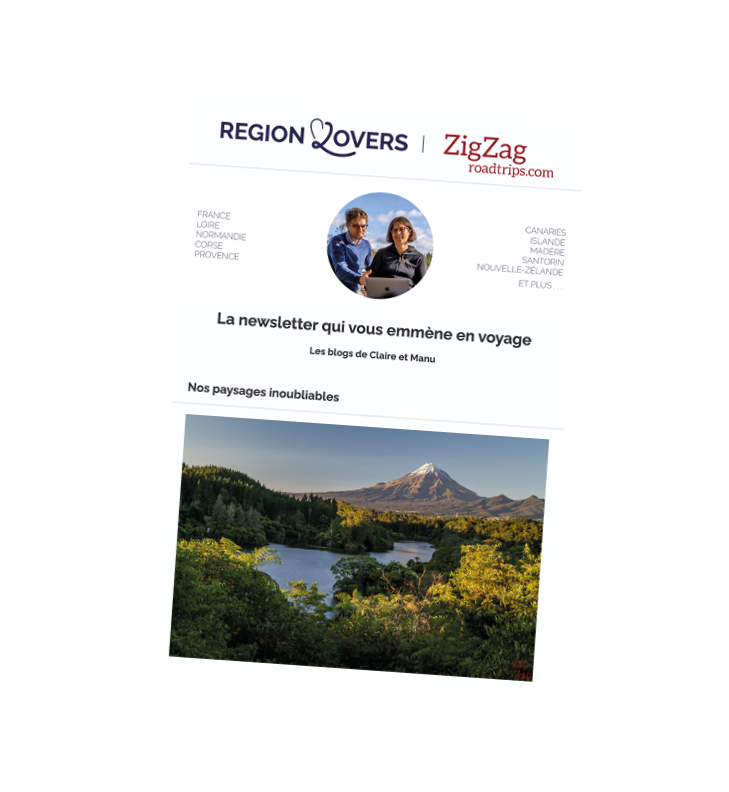We really enjoyed visiting the Musée de Normandie in Caen! Located in the grounds of Caen Castle, this venue showcases Normandy’s heritage.
Through a vast collection of period objects and artifacts, we immersed ourselves in the history of the region. The museum is divided into 2 main collections, one dedicated to archaeology and the other to history and society. We loved immersing ourselves in Norman culture, and (re)discovering the skills of yesteryear.
In this article, we’ll give you all the advice you need to make the most of your visit and form your own opinion of the place.
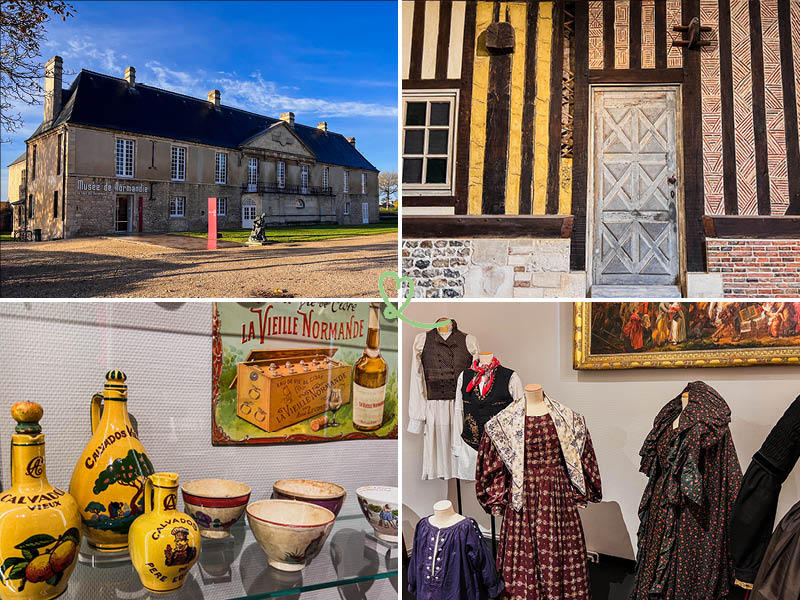
This review is completely independent, we stayed anonymously and paid our bill in full.
Why visit the Musée de Normandie in Caen?
Is the Musée de Normandie in Caen Castle worth a visit?
Of course, the museum offers an in-depth look at Norman daily life, traditions and expertise through the centuries. In fact, we listed it in our article on the best things to do in Caen. It’s an enriching visit for history buffs and those wishing to learn more about Normandy. As natives of this region, we were able to appreciate the wealth of local culture and history. Are you interested in Normandy’s heritage?

Why is the Musée de Normandie in Caen so famous?
This museum is famous for its exceptional collection, which highlights the history, culture and customs of the Normandy region. Thanks to the historical documents it houses, we went back in time and (re)discovered the different periods of local history. The museum is also renowned for its high-quality temporary exhibitions, which attract large audiences and offer fresh perspectives on Norman history and society. Its reputation also rests on its role as a major cultural institution in the region, contributing to the promotion and preservation of Normandy’s heritage.

What we liked best
Before going into more detail about our visit, we’ve selected our 3 favorite sections of the Musée de Normandie:
- Local currencies: did you know that as early as the 2nd century, certain peoples were minting their own coins? At the museum, we were lucky enough to get an up-close look at several period pieces!
- Regional architecture: have you ever wondered how Normandy’s famous half-timbered houses were built? We discovered the secrets of timber-frame construction!
- Textile production in Normandy: between dresses, skirts, blouses, headdresses and other finery, we took a real leap back in time!

Subscribe to our Newsletter
- Get away from it all with Region Lovers’ beautiful destinations!
- Once a month
- Advertising-free
Practical tips and map: Musée de Normandie, Caen, France
Where is the museum?
The Musée de Normandie is located in the grounds of the Château de Caen (14000), in the Calvados département of Lower Normandy. It is located in the former Logis des Gouverneurs.
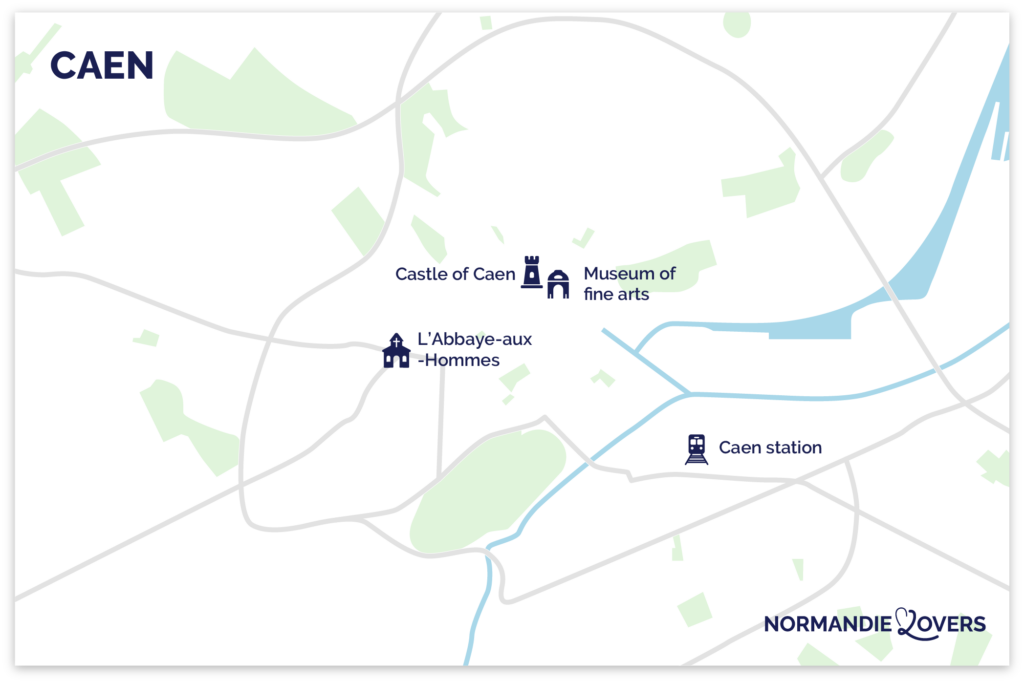
- Driving time from Rouen: 1h30min.
- Driving time from Evreux: 1h45min.
- Driving time from Alençon: 1h25min.
- Driving time from Cherbourg: 1h30min.
- Driving time from Mont-Saint-Michel: 1h30min.
How to get there
Caen is easily accessible by train from all the surrounding towns in Normandy, as well as from Paris. It takes just 2 hours to reach the capital.
See available timetables and book your train and coach tickets now.
From Caen station, it takes around 15 minutes by public transport or 30 minutes on foot to reach the museum. You can choose between bus, streetcar and Vélolib.

Renting a car in Caen is the best way to explore Normandy, as it’s close to the D-Day beaches and the Côte Fleurie. We strongly advise you to bring your own vehicle during your stay to enjoy the riches of this French department. There are regular traffic jams on the Caen ring road, so we recommend you choose your times carefully. In fact, we’ve written an article giving you all our tips for renting a car in Caen.
You can also get to Caen by plane: Caen-Carpiquet airport is 9km from the city center. It connects 9 major French cities: Ajaccio, Bastia, Lyon, Marseille, Nice, Toulouse, Calvi, Figari and Montpellier.
Parking
The museum has no dedicated parking lot, and it is not possible to enter the château grounds with your vehicle. However, there are a number of nearby parking lots:
- Château underground parking lot (Indigo parking lot – access via rue du Vaugeux then Avenue de la Libération).
- Courtonne outdoor parking lot (access via Quai Vendeuvre).
OUR ADVICE FOR RENTING A CAR IN Normandy
- Compare prices on our preferred platform: DiscoverCars – one of the best rated sites.
- Choose a car that is comfortable enough (distances can be long) but compact (some parking lots and villages are narrow).
- Think of thecomplete insurance (some roads are tortuous and narrow).
- There is a lot of demand, book it early.
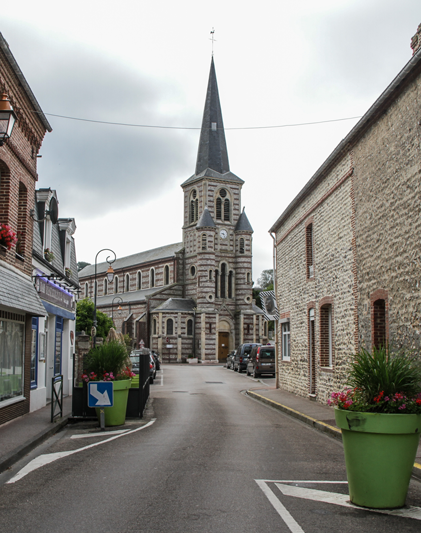
Schedules and rates
Museum opening hours:
- open Tuesday to Friday, 9:30am to 12:30pm and 1:30pm to 6pm,
- open weekends from 11am to 6pm,
- closed Mondays except July and August,
- closed January 1, May 1, Ascension Day, November 1 and December 25,
- exceptionally closed from 4pm on December 24 and 31.
Price list:
- adult full price (during temporary exhibitions): €5.50,
- adult full price (access to permanent collections): €3.50,
- free for under-26s.
For the latest rates and a complete list of free and reduced-rate beneficiaries, visit the official website here.
Finally, if you’re planning to visit several monuments during your stay in Caen, there are some great money-saving passes available:
Length of visit and main difficulties
We recommend you allow 1 hour to visit the Musée de Normandie.
The route is not particularly difficult. The museum offers special rates and access arrangements to ensure the best possible experience for people with reduced mobility. PMR access is located at Porte des Champs.

Elevators and toilets are reserved for people with motor disabilities. Wheelchairs and cane seats are available on loan from the museum reception desk. You can consult the museum’s official website for a full description of the supports in place for different types of disability here.
Best time to visit the museum
The Musée de Normandie is one of Caen’s must-sees, located within the walls of the château. Due to its prime location, it is very popular at weekends between 3pm and 5pm. To make the most of your visit, we recommend weekdays outside school holidays. If you’re an early riser, make sure you get to the museum as soon as it opens to avoid the crowds.

Advice on how to visit
Before starting your tour of the Musée de Normandie, you’ll pass by the Église Saint-Georges. This is where you can buy your tickets, and it’s also a store.

Visiting the museum is very intuitive and straightforward. It is divided into major historical periods, and compartmentalized by main themes. First, we travelled through prehistory and antiquity, followed by Gallo-Roman Normandy. We then took a plunge between the 5th and 10th centuries to look at migration and the Christianization of the region. At the halfway point, we discovered reconstructions of Norman landscapes. To continue, we took a step back in time between the 18th and 21st centuries, where we got a glimpse of regional know-how. From brandy distillation to textile production, Normandy is full of resources!

The Musée de Normandie with children
This museum is particularly enjoyable to visit with children. It includes a booklet dedicated to exploring the museum, and several routes to discover Caen through the ages. Participation costs €1.50.
In the temporary exhibitions, there are also special areas for young visitors, with play stations, puzzles and other games.

Guided tours
Throughout the year, you can take part in activities led by cultural mediators or artists. These personalized tours offer an original, fun way to explore the permanent collections, temporary exhibitions and the Château de Caen.
From family tours to animated, theatrical, workshop, translated and blindfolded tours, you’re sure to find the one that suits you best! For more info, see the official website here.
The museum has also launched a tour application, offering 3 different itineraries here. It’s another way to discover the area and its treasures!

DISCOVER Caen
- What to do in Caen
- Where to stay in Caen: our best hotels
- Where to eat in Caen: our best restaurants
- Caen’s best museums
- Itineraries: 1 day – 2 days
- Caen Castle
- Caen Memorial Museum
- Rent a car in Caen: our tips

The château’s restaurant: Le Mancel
The château’s restaurant, Le Mancel, is now open:
- Wednesday to Saturday, 9am to 2pm and 7pm to 10pm. A tea room is available from 2pm to 7pm.
- Sundays from 9am to 2pm and as a tea room from 2pm to 7pm.
- closed Mondays and Tuesdays all day, Sunday evenings and December 24 and 25.
You can enjoy a starter/main course/dessert menu for around 30 euros.

Nearby restaurants
If you prefer to eat outside the château, here are our recommendations, which you can find in our article on the best restaurants in Caen:
- Restaurant L’Aromate: Axel de Caseneuve and Inès de Saint Jores’ bistronomic table is a real invitation to travel, and we were transported!
- Salon de thé L’Okara: this organic and ethical vegetarian canteen will add color to your plates. A variety of flavours and textures are also on offer, all in a warm and welcoming atmosphere.
- Bar-Restaurant Moon & Sons: this subdued pub inspired by the world of Harry Potter offers a 100% plant-based menu (dishes, pastries and snacks).
WHERE TO STAY IN Caen
Option 1: in the old town center
We recommend..:
- Hotel Best Western Plus Le moderne not far from the castle – see prices, photos and availability
- Hotel La Fontaine also near the castle – see prices, photos and availability
- B&B Les Chambres de L’Abbaye, near Abbaye-aux-Hommes – see prices, photos and availability

Option 2: to Ouistreham
To sleep more in the countryside or near the beach (15 to 20min from Rouen). We recommend..:
- Hotel Manoir Hastings and its stone houses – see prices, photos and availability.
- Hotel La Mare Ô Poissons and its swimming pool – see prices, photos and availability

Option 3: near the port or station
We recommend..:
- Campanile hotel next to the station – see prices, photos and availability.

The archaeological collection
The museum houses a wealth of archaeological and ethnographic collections, offering a glimpse into the lives of Norman populations through the ages. From prehistory to medieval migrations, through changes in rural areas and the first transformations of industrial society, it offers a complete panorama of the history of the inhabitants of Normandy. We enjoyed immersing ourselves in their lives, which are very different from ours today!

Prehistory and Protohistory in Normandy
In the 1st section of the museum dedicated to prehistory, we were lucky enough to be able to touch authentic flints. This room, which covers the Palaeolithic period up to the 1st Iron Age, contained a tactile work of art. Rather interesting, isn’t it?

Afterwards, we were able to take a close look at mammoth bones, more specifically the lower mandible, tusks and molars. They come from various parts of the world, including Siberia, Germany and the North Sea. They were found in Normandy between around 80,000 and 10,000 BC. Discoveries of mammoth fossils have enabled scientists to study their morphology, behavior and adaptation to the prehistoric environment. These archaeological finds are helping to enrich our understanding of the fauna that once populated the Normandy region.

Let’s move on to Protohistory, also known as the Metal Age. By the end of the Bronze Age, craftsmen had become experts in this material. Take a look at our photo below. Doesn’t it ring a bell? When we first saw these helmets, we thought of Asterix and Obelix! These models have greatly influenced our collective imagination, and in particular our representation of Gallic warriors!

USE OUR GUIDE TO PLAN A
DREAM TRIP TO Normandy
All the information you need for your trip:
- 8 maps that make planning easier
- 160+ pre-selected locations
- Practical advice
- 300+ photos to help you choose
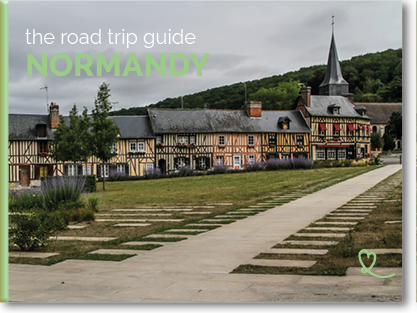
Coins on display at the museum
During your visit, you’ll be able to observe different types of coins on display throughout the museum. We found it interesting to be able to compare them. Does the concept of “monetary treasure” mean anything to you? We learned that the discovery of monetary treasures was often followed by the death of their owners. Faced with imminent danger, they must have tried to hide their loot, but were never able to retrieve it. Pictured here is the Saint-Germain-de-Varreville treasure trove in Normandy’s Manche region.

After the fall of the Roman Empire, the new Gallic dynasties reproduced the gold coins of the Byzantine Empire. You can see the Lombards in our photo, but there are several others on display at the museum. We really enjoyed learning more about the evolution of money through the ages.

Gallo-Roman Normandy
Do you know the name of the terracotta container in our photo below? It’s an amphora. We learned that it was used to transport goods in Gallic and Gallo-Roman times. They could contain wine, olives, oil, dates and other condiments. Discovering what made up the daily life of the ancient inhabitants of Normandy appealed to us!

What do you think these statuettes represent? It’s a relatively difficult question, we agree. These figures embody divinities, most notably Venus emerging from the water. They were discovered at Vieux in Seine-Maritime and Lisieux in Calvados. We have learned that they were used in funeral rites in the 3rd century. The body of the deceased was then buried with personal objects. We found it very interesting to learn more about these old-fashioned practices.

DISCOVER Caen
- What to do in Caen
- Where to stay in Caen: our best hotels
- Where to eat in Caen: our best restaurants
- Caen’s best museums
- Itineraries: 1 day – 2 days
- Caen Castle
- Caen Memorial Museum
- Rent a car in Caen: our tips

The history and society collection
A museum of history and society, we were transported into the life of the Normans of the time. Enchanted by this immersion in their daily lives, we were delighted to (re)discover the region’s customs and know-how. But before appreciating the local expertise, we take you on a journey through the migrations and Christianization of the area.

The consequences of migration in Normandy
Between the 5th and 10th centuries, Normandy underwent a period of great migration. In particular, it was invaded by Franks and Vikings. These migrants founded settlements and established their power over the territory, influencing the region’s history and culture. In this room of the museum, we discovered the evolution of Merovingian fashion, for example. We were surprised to learn that there was already a fashion victim community back then. Unfortunately, as is still the case today, clothing reflects the social hierarchy of individuals. A virtual tour of this space is available on the museum’s official website here.

We mentioned the Frankish warriors earlier, and here you can see their equipment. All these period weapons were found in Calvados unless otherwise indicated. Not surprisingly, these battle tools were mostly made from iron and wood. The resemblance to today’s knives is striking, isn’t it?

OUR ADVICE FOR RENTING A CAR IN Normandy
- Compare prices on our preferred platform: DiscoverCars – one of the best rated sites.
- Choose a car that is comfortable enough (distances can be long) but compact (some parking lots and villages are narrow).
- Think of thecomplete insurance (some roads are tortuous and narrow).
- There is a lot of demand, book it early.

Normandy landscapes
During your visit to the museum, you’ll have the opportunity to observe several reconstructions of Norman landscapes. The model below shows the Pommereuil farm in the Eure region of France. We found this farmhouse very representative of Norman architecture. We could easily have imagined ourselves spending a pleasant weekend there, sheltered by an apple tree. Do you love the countryside like we do?

Have you noticed how typical Norman houses are? They are built of half-timbered panels. In short, the home’s skeleton is based on huge, solid, strategically positioned wooden posts. This is what makes them so charming. More commonly known as half-timbered houses! If you get the chance to go to Rouen, you’ll be able to see some beautiful and colorful ones, but there are also plenty in Caen. In fact, take a look at our article on must-do activities in Rouen.

Norman know-how
Normandy has an exceptional heritage of know-how. Whether it’s beverage production, local crafts or textile design, we were delighted to see the museum highlight local expertise. As you know, this region is a major producer of cider and apple juice, with many apple orchards. Here you can see a 20th-century cider tapping machine.

Between ceramics, pottery and copperwork, there seems to be no limit to the talent of the Normans! Below, you can contemplate everyday objects of various shapes and colors. These potteries reflect a certain aesthetic research, and a desire to make these items unique. Have you seen this curious rabbit-shaped terrine?

In the 17th century, lace production played a major role in the lives of women and children, particularly in Basse-Normandie. We were impressed by this lace loom, which looked very complex to our amateur eyes! Can you imagine doing it yourself?

Before the advent of mechanical production in the 19th century, lace was considered a luxury product reserved for the wealthy classes of major French and European cities. We were amazed by the finesse of the lace pieces on display. What a satisfaction to be able to observe the work of the Normans through the ages, we really enjoyed this museum! We highly recommend a visit!

PLAN YOUR TRIP TO Normandy
Inspiration destinations
- Deciding where to go in Normandy – the best destinations
- Our weekend ideas: best-of, romantic, unusual, seaside, luxury, family
- 16 seaside hotels in Normandy
- The most beautiful charming hotels in Normandy

Best of

Practice
- Where to stay in Normandy – best places and hotels
- See our tips for renting a car at CDG airport, Orly airport, Beauvais airport, Caen, Rouen, Bayeux…

History in brief
In 1963, the Musée de Normandie opened its doors within the walls of Caen Castle, with the aim of making the medieval site a landmark of Norman heritage and history. The installation of the Musée des Beaux-Arts in 1970 completed this initiative, marking a new stage in the château’s history. Today, the museum’s activities extend to research, preservation and enhancement of the site. This medieval archaeological site, located in the heart of the city, still has many treasures to reveal!

All our tips in this article were put into words with the help of Elisa.

